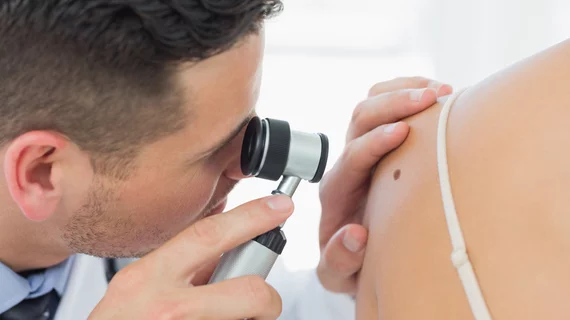A novel imaging-based computer-aided diagnostic system is up to 90% accurate at spotting melanoma, according to a study published in Diagnostics.
Lithuanian researchers developed their method by combining various noninvasive imaging technologies, such as ultrasound and optical spectrophotometry.
And when tested on 100 lesions, the tool accurately distinguished melanoma from benign findings, topping the 90% mark in some situations.
“Based on the results of our research, we can confirm that the developed automated system can complement the noninvasive diagnostic methods currently applied in the medical practice by efficiently differentiating melanoma from a melanocytic mole,” Renaldas Raisutis, head of the team behind the research at Kaunas University of Technology, said in a statement published Monday.
In Europe, where this study was undertaken, melanoma is the fifth most common type of cancer, with mortality rates tallying 3.8 deaths per 10,000 individuals in northern regions.
Additionally, Raisutis noted that spotting melanoma relies on removing and then testing the entire lesion. This invasive approach is highly user-dependent and only 65% accurate.
For their research, the team developed four different binary classification algorithms and tested them on 91 cases, including 50 moles and 41 melanomas.
The models all utilized pathologic, ultrasonic and spectrometric images, but the support vector machine approach proved most accurate, the authors noted, diagnosing cutaneous melanoma with an accuracy of 98.9%.
Raisutis et al. said they designed their system specifically for medical professionals, but hinted they may also be considering an at-home option.
The tool may have a big impact on outcomes when used alongside current diagnostic approaches.
"An efficient diagnosis of an early stage malignant skin tumor could save critical time: More patients could be examined and more of them could be saved,” Raisutis explained.
Read the entire study here.

